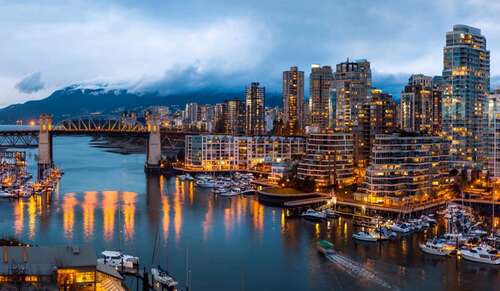
The chances of Canadian cities adopting 30 City and restricting the speed limit to 30 kilometers an hour are not great, but it is worth aspiring to.
In January, Bologna became the first Italian city to implement “30 City,” an urban planning model which restricts the speed limit to 30 kilometres an hour. Drivers on Bologna streets, except for some main roads (where the limit will continue to be 50 or 70) will be required to drive at speeds of 30 or below. Proponents says that 30 City reduces air and noise pollution and, most importantly, makes the city safer. Slow speeds mean more reaction time. That means fewer accidents and those that do occur are less severe.
Naturally, some drivers were outraged.
Protests were held not long after the new rule was implemented. The Guardian reported that the 30-kilometre-an-hour speed limit “provoked fury among some drivers … On what local newspapers called ‘D-day,’ a procession of cars brought traffic to a standstill in protest, while taxi drivers threatened to hike their fares in response to being forced to drive more slowly.” One irate motorist complained that the new speed limit meant he no longer had time to drive home from work for lunch.
Bologna isn’t the first European city to adopt 30 City; other urban centres include Brussels, Helsinki, Bilbao and Lille. None of these would be considered a metropolis. Brussels is the largest with a little more than 1.2 million inhabitants. Bologna boasts 366,133. They all have robust public transportation. The system in Brussels was ranked sixth-best in the world by the 2023 William Russell Global Transport Index. All the 30 City centres have car-free traffic zones.
The news that Bologna – in the region of Ferrari and Lamborghini, a place for creating some of the fastest and most beautiful cars in the world – had embraced 30 City has no doubt got some in Canadians wondering if the same speed limit restrictions can be applied here.
Not to worry, in many Canadian cities it’s already informally in place.
Toronto has unofficially implemented “18 City” with an average rush-hour speed of 18 kilometres an hour, according to the TomTom Traffic Index.
The average rush hour speed is 26 kilometres an hour in Winnipeg, 22 in Vancouver and 25 in Montreal.
If Canadian cities did wish to make it official, then they would have to spend a great deal of money on something that European cities have in abundance – traffic cameras. These mechanical martinets are everywhere. If you go over the speed limit in an Italian city (or village, for that matter) you can be pretty sure you will get a ticket. I should know, I’ve received enough fines (including one for going one kilometre above the limit) that I could have bought a few bottles of nice Brunello with the money I shelled out. Where there isn’t a camera there are good old-fashioned cops. Sergio Baldazzi was the first Bolognese to get a ticket for violating the 30 City speed limit. Fines start at 35 kilometres an hour; he was flagged for going 39.
The problem with Canadian cities is that when drivers are stuck crawling along in traffic, they compensate for the delays by speeding when the roads open up. This reality is compounded by a universal disregard for speed limits. Canadian drivers consider them more as “speed suggestions” or “speed inferences.”
If I had to create an equation to demonstrate the real speed limit on Canadian city streets it would be:
Posted speed = a
Actual speed = b
The equation for calculating “actual” Canadian city street speeds is as follows: a x 2 – 25 = b
For a legal posted speed limit where a = 40 kilometres an hour: 40 x 2 – 25 = 55
- The actual speed people drive in a 40 zone is 55.
For a legal posted speed limit where a = 60: 60 x 2 – 25 = 95
- The actual speed people drive in a 60 zone is 95.
For highway speeds the following equation applies: a ÷ 4 x 8 – 40 = b
For a highway with a legal speed limit where a = 100: 100 ÷ 4 x 8 – 40 = 160
- The actual speed people drive on a 100-kilometre-an-hour highway is 160.
Given the realities of dysfunction on Canadian streets and highways, the chances of Canadian cities adopting 30 City are about as high as me living in Bologna and driving home for lunch each day. Which is to say, not great, but worth aspiring to.



